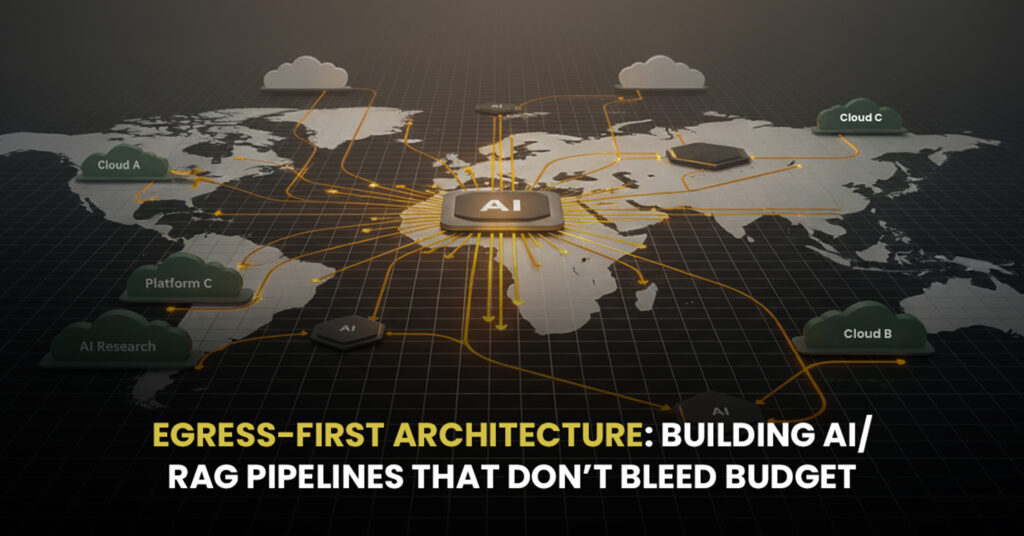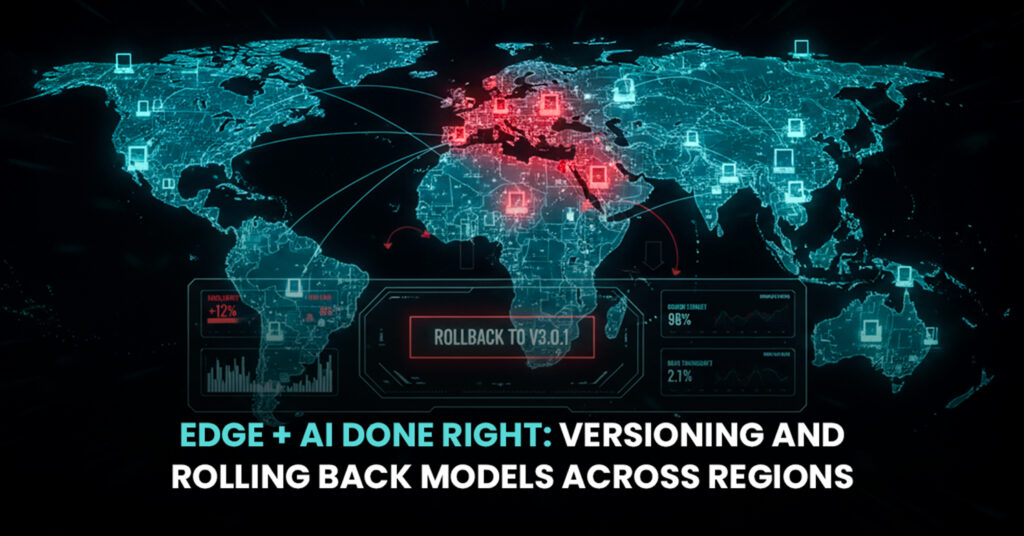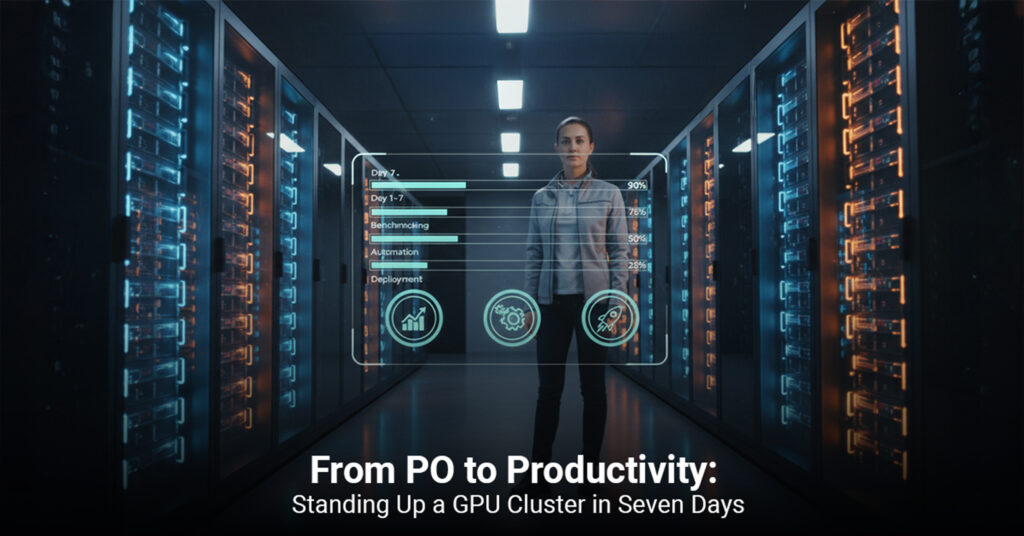Picture this: You’ve got a massive data lake that was supposed to be your organization’s golden ticket to data-driven decisions. Fast forward three years, and your analytics team is still waiting weeks for simple reports while your data engineers are drowning in maintenance requests. Sound familiar?
Welcome to the $3.1 trillion data paradox. Despite enterprises investing astronomical amounts in data infrastructure, research shows that 80% of organizational data remains locked away, unused and unloved. It’s like having a Ferrari in your garage but only being able to drive it in first gear.
The culprit? Traditional data lakes that promised flexibility but delivered complexity. The good news? There’s a revolutionary approach that’s changing the game: data mesh architecture. And CloudServ.ai is leading the charge in helping enterprises make this critical transition.
The Great Data Lake Experiment: What Went Wrong?
Remember when data lakes were the hottest thing since sliced bread? The concept was brilliant in its simplicity: dump all your data into one massive, cost-effective repository and figure out what to do with it later. Schema-on-read flexibility! Unlimited scalability! What could go wrong?
Well, as it turns out, quite a lot.
The Data Swamp Dilemma
Here’s what nobody talks about in those glossy vendor presentations: data lakes have a nasty habit of turning into data swamps. Without proper governance, that pristine lake of structured information quickly becomes a murky mess where:
- Data lineage becomes a mystery novel Nobody knows where data came from or how it was transformed
- Quality control goes out the window Garbage in, garbage out, but now it’s garbage everywhere
- Performance hits rock bottom What started as lightning-fast queries now takes hours to complete
- Teams work in silos Data engineers become gatekeepers, creating bottlenecks that slow innovation to a crawl
One Fortune 500 client we worked with had 47 different data sources feeding into their lake. Their analytics team was spending more time hunting for reliable data than actually analyzing it. Sound exhausting? It was.
The Hidden Costs of Data Lake Maintenance
The dirty secret of traditional data lakes is the maintenance burden. What looks like a simple storage solution on paper quickly becomes a full-time job for multiple teams:
- ETL Pipeline Management: Constant babysitting of data transformation processes
- Schema Evolution Headaches: Every upstream change breaks something downstream
- Performance Optimization: Endless tuning sessions that feel like digital archaeology
- Security and Compliance: Trying to govern a centralized data dump across multiple business domains
One CTO recently told us, “We built a data lake to make our teams more agile, but we ended up with the most rigid system in our entire infrastructure.” Ouch.
Enter the Data Mesh: A Paradigm Shift That Actually Works
So what’s the alternative? Enter data mesh a concept that’s flipping traditional data architecture on its head. Think of it as the microservices revolution, but for data.
The Four Pillars of Data Mesh Magic
1. Domain-Oriented Decentralization Instead of one massive data lake, you create distributed data products owned by the teams that understand them best. Marketing owns customer data, Operations owns supply chain data, Finance owns… well, you get the picture.
2. Data as a Product This is where things get interesting. Each domain treats their data like a product with clear APIs, documentation, SLAs, and user experience considerations. No more mysterious data dumps!
3. Self-Serve Data Infrastructure Imagine if your data teams could provision analytics environments as easily as spinning up a cloud server. That’s the self-serve dream empowering domain experts without requiring a PhD in distributed systems.
4. Federated Computational Governance The secret sauce that prevents chaos. You get the flexibility of distributed ownership with the control of centralized governance. It’s like having your cake and eating it too.
Why Enterprises Are Making the Switch
The numbers don’t lie. Organizations implementing data mesh architectures are seeing:
- 300% faster time-to-insight From months to days for new analytics use cases
- 60% reduction in data engineering bottlenecks Domain teams become self-sufficient
- 45% improvement in data quality When you own the data, you care about its quality
- 25% cost reduction Eliminating redundant data processing and storage
But here’s the kicker: it’s not just about the metrics. It’s about fundamentally changing how your organization thinks about and uses data.
CloudServ.ai’s Data Mesh Implementation: Where Theory Meets Reality
At CloudServ.ai, we’ve learned that successful data mesh implementation isn’t just about technology it’s about orchestrating a symphony of people, processes, and platforms. Here’s how we make it happen:
Phase 1: The Data Architecture Health Check
Before we start moving data around, we need to understand what we’re working with. Our assessment process includes:
Legacy Data Audit: We map out your current data landscape, identifying pain points, redundancies, and hidden gems. One client discovered they had the same customer data stored in 12 different formats across 8 systems. Talk about data déjà vu!
Domain Mapping: We work with your teams to identify natural data domains within your organization. This isn’t always obvious sometimes the org chart doesn’t match the data flow.
ROI Modeling: We build a business case that shows exactly what you’ll gain from the transition. Spoiler alert: it’s usually a lot more than you expect.
Phase 2: Building the Technical Foundation
This is where the rubber meets the road. Our technical architecture includes:
Distributed Data Products: We create microservices for data that provide clean APIs, automated documentation, and built-in monitoring. Each data product knows how to describe itself, validate its quality, and serve different consumer needs.
Self-Service Analytics Platform: Think of it as the “easy button” for data exploration. Business users can discover, access, and analyze data without filing IT tickets. We’ve seen marketing teams go from data-dependent to data-independent in weeks.
AI-Powered Data Governance: Our automated governance layer uses machine learning to detect data quality issues, suggest improvements, and ensure compliance policies are followed. It’s like having a data steward that never sleeps.
Federated Security Model: Zero-trust architecture for data access, ensuring that sensitive information stays protected while enabling collaboration. Security that doesn’t slow you down imagine that!
Phase 3: The Migration Dance
Here’s where many data mesh projects stumble the migration itself. We’ve perfected a phased approach that keeps your business running while we rebuild the foundation:
Parallel Pipeline Management: We run old and new systems side-by-side, validating results and building confidence before making the switch.
Real-Time Validation: Continuous monitoring ensures data quality and performance throughout the transition.
Rollback Capabilities: Because sometimes you need a safety net, we maintain the ability to quickly revert if issues arise.
Real-World Success Stories: Data Mesh in Action
Let’s talk about results. Because at the end of the day, that’s what matters.
Case Study: Global Manufacturing Giant
The Challenge: A Fortune 500 manufacturer was drowning in data from 47 different sources. Their analytics cycles took 6 months, and by the time insights were delivered, market conditions had changed.
The CloudServ.ai Solution: We implemented domain-specific data products for:
- Supply chain optimization
- Quality control analytics
- Operations performance monitoring
- Customer behavior analysis
The Results:
- 85% reduction in analytics delivery time (6 months to 3 weeks)
- $12M in annual cost savings through operational efficiency
- 40% improvement in on-time delivery performance
- Real-time quality alerts preventing $2M in potential recalls
The VP of Operations told us, “For the first time in years, our data is actually helping us make decisions instead of just documenting what already happened.”
Case Study: Financial Services Transformation
The Challenge: A regional bank was struggling with regulatory compliance, taking weeks to generate required reports while missing opportunities for real-time fraud detection.
The CloudServ.ai Solution:
- Compliance-focused data products with automated reporting
- Real-time fraud detection data streams
- Cross-business unit data collaboration platform
The Results:
- 70% faster regulatory reporting
- 300% improvement in fraud detection speed
- $5M reduction in compliance costs
- 25% increase in cross-selling opportunities through better customer insights
Navigating the Challenges: What Could Go Wrong (And How We Prevent It)
Let’s be honest data mesh isn’t a magic wand. There are real challenges, and we’ve seen organizations stumble. Here’s what to watch out for:
Challenge #1: The Culture Shift
Moving from centralized to distributed data ownership is like teaching a cruise ship to sail like a fleet of speedboats. It requires fundamental changes in how teams think about data.
Our Solution: We don’t just implement technology; we implement change management. Our approach includes:
- Executive alignment workshops
- Domain champion training programs
- Cross-functional collaboration frameworks
- Success metrics that incentivize the right behaviors
Challenge #2: Technical Complexity
Distributed systems are inherently more complex than monolithic ones. Without proper tooling and expertise, you can end up with a bigger mess than you started with.
Our Solution:
- Managed services for complex technical components
- Automated tooling that abstracts complexity
- 24/7 monitoring and support
- Knowledge transfer programs that build internal capabilities
Challenge #3: Data Product Thinking
Most organizations are great at building software products but terrible at building data products. It’s a different skill set entirely.
Our Solution: We establish Centers of Excellence that:
- Define data product standards and best practices
- Provide templates and accelerators
- Offer ongoing coaching and support
- Create communities of practice for knowledge sharing
The ROI Reality Check: What You Can Actually Expect
Let’s talk numbers, because that’s what keeps CFOs happy:
Quantifiable Benefits
Time-to-Insight Improvements:
- Traditional data lake: 3-6 months for new analytics use cases
- Data mesh architecture: 1-3 weeks
- CloudServ.ai average: 2 weeks with our accelerators
Operational Efficiency Gains:
- 60% reduction in data engineering effort on maintenance
- 45% decrease in data quality issues
- 30% improvement in analytics team productivity
Cost Optimization:
- 25% reduction in overall data infrastructure costs
- 40% decrease in compliance and governance overhead
- 200% ROI typically achieved within 18 months
The Intangible (But Valuable) Benefits
- Innovation Acceleration: Teams can experiment with data without lengthy approval processes
- Decision-Making Speed: Real-time insights enable faster business responses
- Competitive Advantage: Better data leads to better products and services
- Employee Satisfaction: Data teams spend time on value-add work instead of maintenance
Future-Proofing Your Data Strategy
The data landscape is evolving rapidly. Here’s what’s coming next and how CloudServ.ai is preparing:
Emerging Trends We’re Watching
AI/ML Integration at Scale: Data mesh makes it easier to deploy machine learning models close to the data, reducing latency and improving performance.
Real-Time Everything: Streaming data architectures are becoming the norm, not the exception. Our data mesh implementations are built streaming-first.
Industry-Specific Solutions: We’re developing specialized data mesh templates for healthcare, financial services, manufacturing, and retail.
CloudServ.ai’s Innovation Roadmap
- Next-Gen Data Catalogs: AI-powered discovery that understands context, not just metadata
- Automated Data Product Generation: Tools that can automatically create data products from existing datasets
- Cross-Cloud Data Mesh: Seamless data sharing across multiple cloud providers
- Quantum-Ready Architecture: Preparing for the next computing revolution
Your Data Mesh Journey: Taking the First Step
Ready to transform your data architecture? Here’s how to get started:
Step 1: Assessment and Planning
We offer a complimentary data architecture maturity evaluation that includes:
- Current state analysis
- Data mesh readiness assessment
- ROI projections and business case development
- Implementation roadmap with timelines and milestones
Step 2: Pilot Program
Start small, think big. We typically recommend beginning with:
- One high-value data domain
- Clear success metrics
- 3-6 month timeline
- Proof of concept that demonstrates value
Step 3: Scale and Optimize
Once the pilot proves successful:
- Expand to additional domains
- Implement advanced governance features
- Optimize performance and costs
- Build internal capabilities
The Bottom Line: Data Mesh Isn’t Just Hype
Look, we’ve seen enough technology trends come and go to be skeptical of the latest “revolutionary” approach. But data mesh is different. It’s not just a new way to store data it’s a fundamental rethinking of how organizations can become truly data-driven.
The companies that get this right won’t just have better analytics; they’ll have a competitive advantage that’s really hard to replicate. They’ll be able to respond to market changes faster, serve customers better, and innovate more effectively.
At CloudServ.ai, we’re not just implementing data mesh architectures we’re helping organizations fundamentally transform how they think about and use data. Because in today’s world, the organizations that can turn data into insights the fastest are the ones that win.
Ready to start your data mesh journey? Let’s talk. Our team of cloud-certified engineers and data architects is standing by to help you turn your data swamp into a competitive advantage.
Want to learn more about CloudServ.ai’s data mesh solutions? Contact our team for a free consultation and discover how modern data architecture can transform your enterprise analytics. Because your data deserves better than a swamp.



